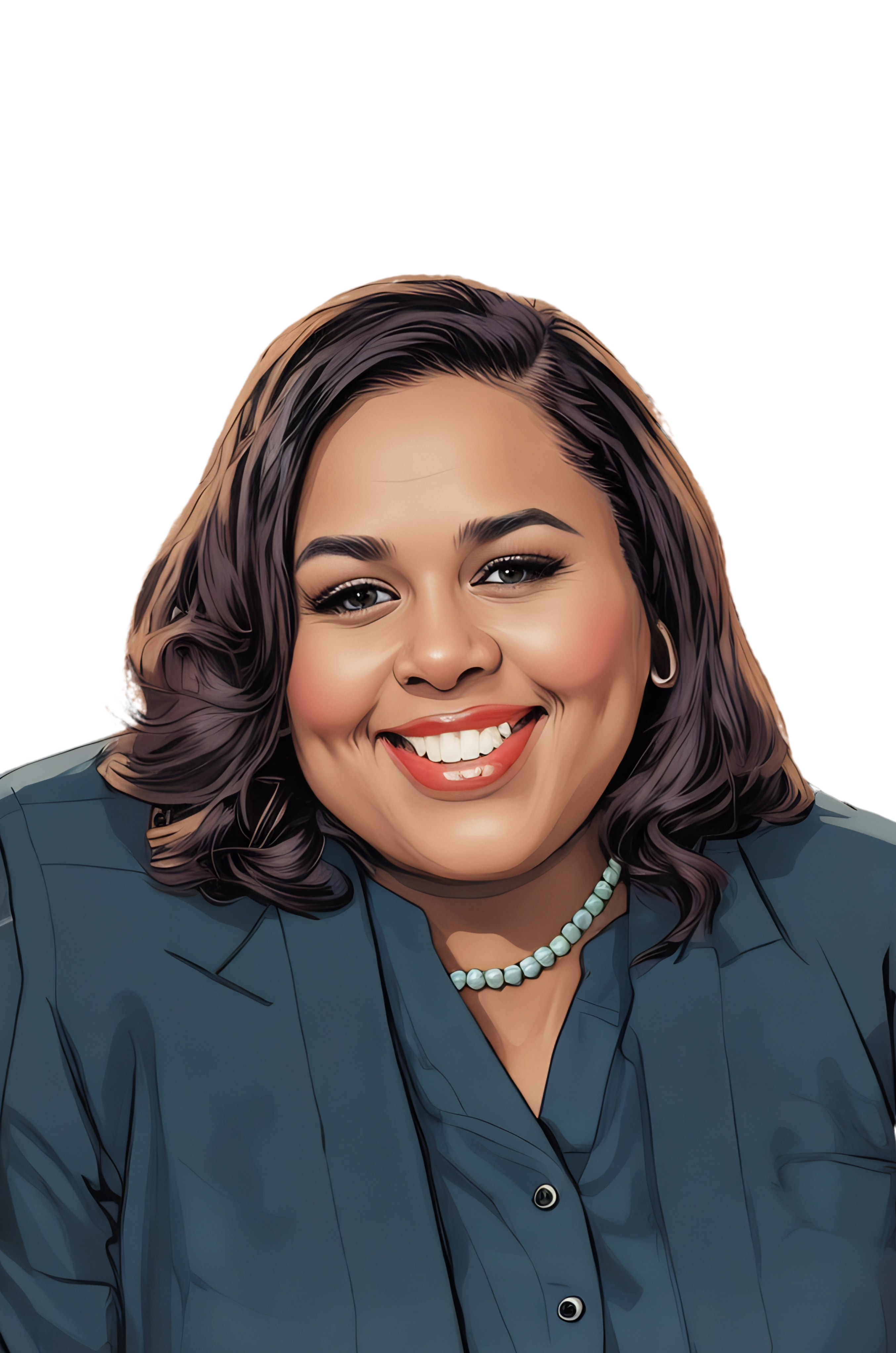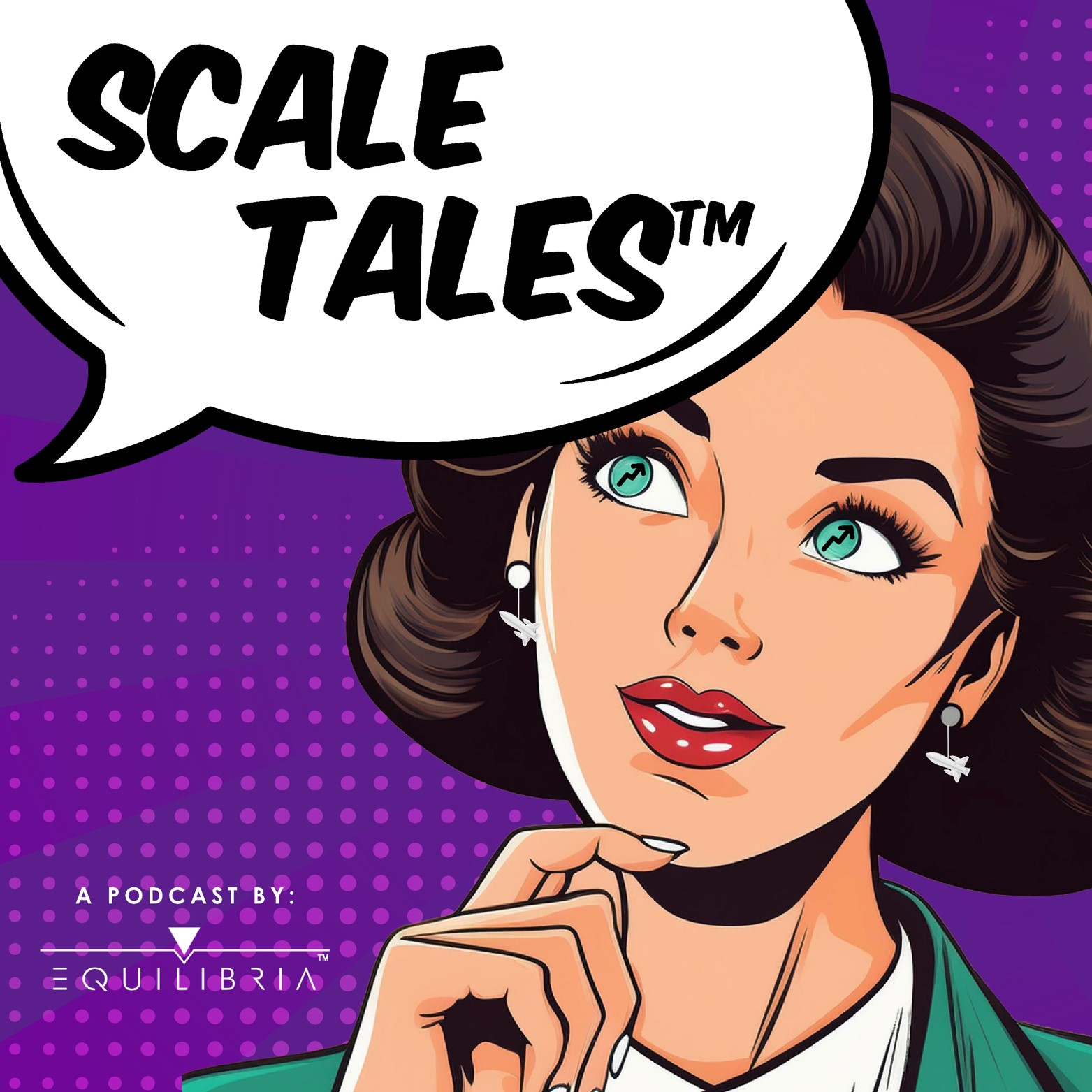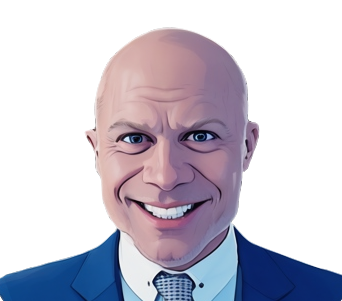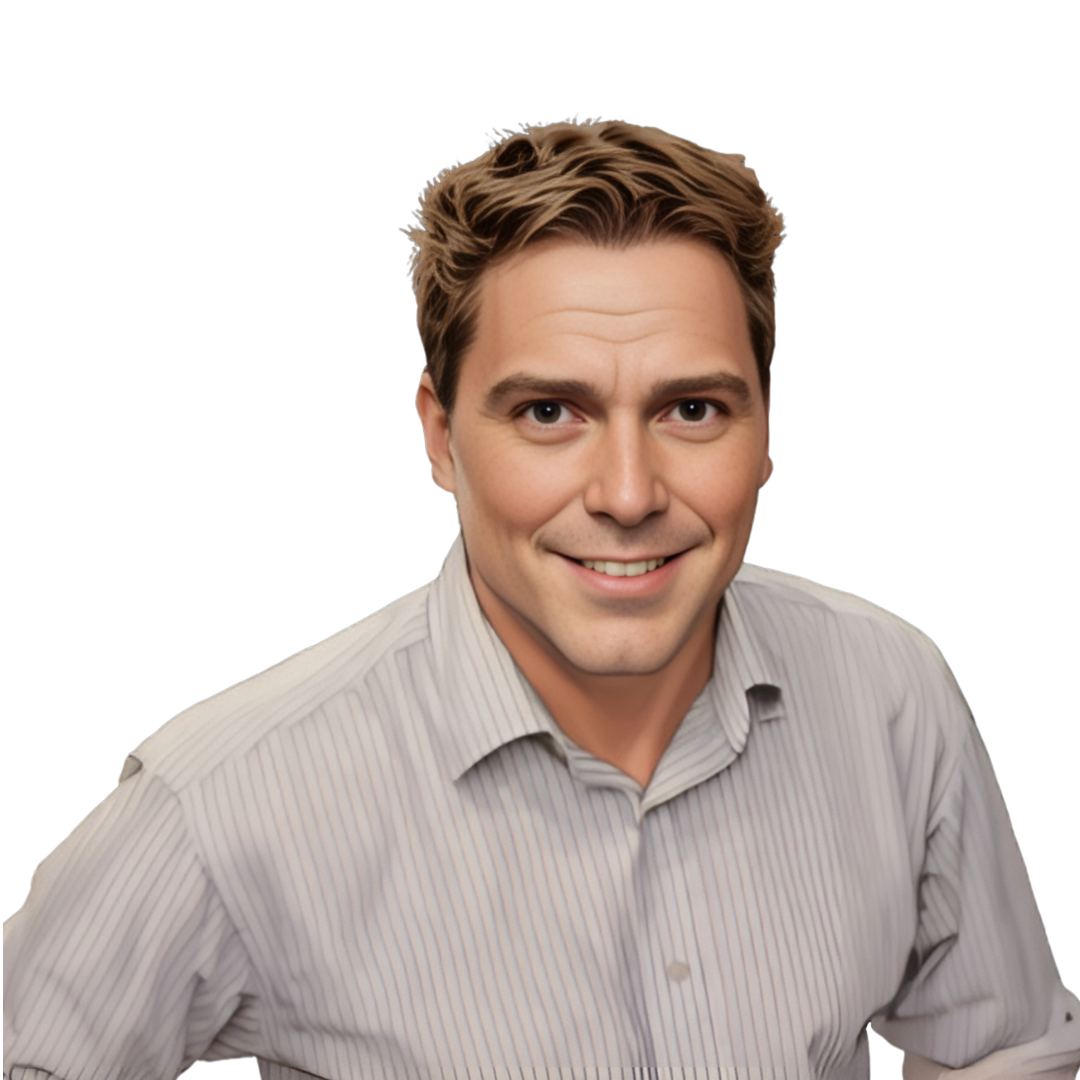Transcript
This episode is brought to you by Equilibria, Inc. Equilibria provides training to assist fast-growing companies in documenting and improving their key processes for maximum operational performance. Visit EQBsystems.com to stop the chaos of fast growth and start flowing today! 
Welcome to Scale Tales – the business storytelling podcast where entrepreneurs, executives and experts share firsthand accounts of those magical moments when they achieved something bigger than even they could have imagined.
I’m Alicia Butler Pierre. The covid-19 pandemic. As much as I’m sure we’d all like forget about it, how can we? It was a time marred by death, chaos, and uncertainty, but paradoxically also a time of life, opportunity, and freedom. Both individuals and businesses alike grappled with new ways to deliver their work. Many businesses also close their doors, while some were able to secure loans to keep their businesses open. Our next tale comes from someone in my neck of the woods, a person who had the unusual task of stepping into a CEO role during this pandemic. The stakes were high, the situation complex, and the result…well, that’s what you’re about to learn.
This is Ep. 20: How Laquisha Milner Led the Scale Up and Scale Down of a FinTech Company Servicing 300,000 Customers
I’m Laquisha Milner, Managing Partner of M2 Business Group. M2 is focused on leading organizations through transformation, helping them evolve, adapt, and achieve clarity in the most complex circumstances. I’m currently located in Atlanta, Georgia, and this is my scale tale.
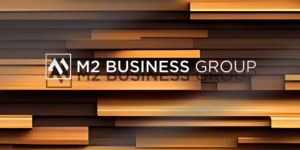
It all started back in June of 2012. I received an update from a friend who had heard about anew startup in Atlanta. At the time, I was working in a product management role, at an organization in Atlanta. I was not familiar with startup culture. Startup culture was what was out in California, in Silicon Valley. It was the things that we heard about on TV. My background up until this point had been a solid 10 years in large corporate environments. I did eight years at Turner Broadcasting in their technology group. I also spent time at Earthlink.
At the time, I was working at Recall, which was a large data destruction global company. When I heard about the opportunity for a startup, it seemed like a change, an opportunity for me to take risk. What I had learned up until this point in my career is that I liked challenges. I seemed to steer towards things that were complex and unknown. And so the idea of joining a startup was exciting. So I went for it. In June of 2012. I started at what was known then as Kabbage, Inc. Kabbage now has been sold and acquired by American Express.
I spent eight years at Kabbage building amazing products. We were a leader in the small business lending space. We were prominent, we were cutting edge. And I was the head of product management. That was exciting because I was working on something new and transformative for small businesses. Not only were we building new technology, but we were growing an organization. I was one of the first 50 people there so I had the opportunity to really jump in and learn what startup culture was all about. It was like Google. It was exciting. It was vibrant.
We had a number of complex issues that we were resolving and understanding. Trying to build a system that was easy for our customers, but also deliver value to help American small businesses grow. That was always the idea of Kabbage. To be able to allow a small business, through a small business loan, to take working capital as they needed it so that they could grow. As the head of product management, my job was to continuously think about how to make those innovations.
I had the opportunity very early on to work with architects and technical folks and really get an understanding of machine learning. Those were some of the perks of working at a startup because we were collaborative and we ideated about how to change this industry. We also had great leadership that had a vision that we all understood. That’s one of the tenets of my leadership is to create a clear vision that everyone understands and can rally around.
We just wanted to get funds out. We wanted customers to really enjoy our product. I was able to help grow and shape that by thinking through the entire life cycle of what a customer needed and how to resolve their problems.
Three year later, in 2015, Laquisha experienced her first global scale.

watched Kabbage transition from a loan product into building a platform, which I had at hand in constructing, architecting, and really thinking through how we would do that. That’s when I knew that it was possible for me to also lead something big and great and exciting because I got that experience, I traveled the world. I met a number of exciting and great people, and I was able to help build yet another version of this organization. If we fast forward to 2020, right at the start of COVID, I had the opportunity to take a new role.
I left Kabbage. After eight years, I was ready to fly. I went to another organization where I built their first ever project management office. I was the VP of a PMO for an organization where I was going to go and help them grow a new platform. This organization had grown over the last two years through about 10 acquisitions. And my job was to bring it all together and build one single platform. I was ready to lead.
Although Laquisha was excited to take on this new leadership role, 10 months later, in
2021, she found herself back at Kabbage, well, sort of…
I always run towards things that are undefined. When Kabbage sold to American Express, a new company was created, Case Servicing Corp. I was appointed CEO of Case Servicing during a pivotal moment in American business history.
Case Servicing was established to process the $7 billion Paycheck Protection Program portfolio and the remaining Kabbage legacy portfolio. Case Servicing was going to continue the critical mission of supporting small businesses during a time of unprecedented economic uncertainty. Stepping into this role, I faced an organization at a critical juncture. Case Servicing needed to evolve rapidly to address the inherited complexities of such a large portfolio and to service over 300,000 customers. Some of these complexities included regulatory requirements that were constantly changing operational inefficiencies.
Once again, Laquisha found herself at a startup. But this time it was different

What I quickly recognized when I stepped in as CEO is that there was a need to develop a clear strategy. A strategy was needed in order to guide its immediate priorities while staying focused on the ultimate mission of supporting these small businesses and ultimately to wind down. This was a unique experience because most companies don’t start with a mission to wind down.
Well, this one did. And that’s why I refer to this experience as architecting a complex transformation and laying out a blueprint when there isn’t one. This particular role wasn’t just a leadership challenge. It was an opportunity to redefine how organizations can deliver extraordinary impact in the midst of uncertainty. Drawing over two days of multidisciplinary experience that I gathered from all of those other roles, I was able to use my technology, operations and strategic transformation skills in order to build a thriving company. However,
there were major pivot points in this experience.
Number one, I was taking over the helm in 2021. The company was established in October of 2020. For a few months there was another leader. So I came in right at the time that The
company was new. There was a $7 billion portfolio that I had to manage. There was a clean slate and a strategy needed and I needed to rebuild the technology platform. Wow! How was I going to do that? Scale from small team to full operation.
One of the things I did was I, with the help of some great leaders, came up with a mixed talent strategy. I hired only a few full-time employees and filled the rest of the roles with specialists as we needed them. I was building an organization during the pandemic, the remote leadership. Imagine that, having five to 20 to 40 to upwards of 300 employees working on this mission and never meeting them in person.
Let’s do a quick recap. Nine years after Laquisha first started working in product development at Kabbage, she became the CEO of its spinoff company, Case Servicing. That’s where she was tasked with servicing customers who applied for and received Paycheck Protection Plan or PPP loans to keep their businesses afloat. Although she had experience building and leading large teams, Laquisha had always done so in person. Now she had to do it 100% remotely. But she was up for the challenge.
There was virtual transition management. It was building team spirit through screens and creating and developing technology and new systems without any in-person training. Remember, there were 300,000 small businesses depending on this new organization to guide them through the PPP process. We needed strong and competent customer service team members in order to do that. So everything was new. We also had quick growth needs, rapid team expansion, remote hiring and on-boarding and keeping things running smoothly. Don’t forget we came into this, or I did, having inherited complexities and so all of that needed to be managed. While we did a great job, we didn’t do it without learnings along the way.
That’s understandable considering that Laquisha had a $7B loan portfolio to service for 300,000 small businesses. Not only did she have to scale up to scale down, but she also had to lead backwards. There was no blueprint to follow nor a Harvard Business Review case study to analyze because…
Nobody had ever done it in life. Because they made it up for the pandemic. leading backwards and having to keep that in mind with every decision you made from the number of employees to the type of technology, because you knew that it was temporary. Now I didn’t know that going in.
I didn’t know that I would have to scale so much because I couldn’t foresee some of these complexities, like the federal investigations, right? I didn’t know, you know, that I would have to deal with that. And that’s why I had to scale even more in response to that. The goal post was changing rapidly.
As if there weren’t enough challenges, there was another major one that Laquisha and her team also soon discovered.
During the pandemic, Kabbage pivoted its loan servicing business to service the PPP, which a number of fintechs did, because the issue was the government couldn’t get the money out fast
enough. So the government partnered with fintechs as an avenue to get the money out to leverage their existing technology in order to ship money.
So when they sell in October, that functionality and technology now is owned by American Express because American Express did not acquire the PPP portfolio or the legacy loan. They
took the people and the technology. Now Case Servicing starts, I need data, so they give me some of it, but I don’t have everything I need, because when Kabbage was doing this, they had
everything. So when I started doing it, I don’t have everything. So now I need to figure out what do I need in order to service these loans and put together a strategy from multiple places in
order to get it and do it. It’s kind of like I’ve got one hand tied in the back
And with the other hand that was free, Laquisha began making moves to work with what she had – partial data, some of which her team only had read-only access to. Where Kabbage initially provided a platform to process approved PPP loans, Case Servicing existed as a liaison to help loan customers interact with the United States’ Small Business Administration (or SBA) for loan forgiveness.
I had to build a forgiveness platform not using what they used initially. I got as much data as I could from the previous process, and then I partnered with a third party who had a forgiveness platform, and I stood up a new infrastructure and processed it that way.
In case you’re wondering, Case Servicing provided a platform that offered its 300,000 loan customers with the ability to apply for loan forgiveness from the SBA, if they wanted to apply. They themselves did not directly forgive any loans.
A customer needs a place to come, a place to put all of their info, and I need the ability to send it to the SBA for a decision. And so this thing that I own is the customer’s interface. To do that, that was the fintech’s role. But if you take away the information from the first time will only give me part of it, but not access to make any changes to it. Then I have to figure out how to provide this infrastructure that is required in order to still do this job. And that’s what I did.
Indeed she did. Coming up after the break, Laquisha will take us behind the scenes of Case Servicing. We’ll get an audio peak of what it was like to be part of a remote team led by a transparent mission, attend daily stand-up meetings, and…be in their high stakes digital war room.
Some small businesses fail not from the lack of customers, but from too many. When your business receives positive publicity, it’s exciting! The spotlight attracts more customers and the cash flows in. But too much growth too soon can be catastrophic especially if your organization lacks the business infrastructure to support this growth.
Behind the Façade: How to Structure Company Operations for Sustainable Success is a book that introduces a proven framework for building business infrastructure. The book is structured into six relatable stories of entrepreneurs who apply this framework, giving you an inside look at how they solve their fast growth issues and how you can too! Pick up your copy today at ScaleTalesPodcast.com. ScaleTalesPodcast.com.
Welcome back! Laquisha Milner became CEO of a fintech company with a unique mission to provide a loan forgiveness platform for American small businesses. That mission not only included starting up but also intentionally shutting down in five years or less. This is a scale tale that can only be told by the person who was there leading the charge. Here’s Laquisha…
The sunset was supposed to take five years because that was the length of the program. Forloans. That was the initial time period that a customer had like pay it back. The assumption was that within the first few months of forgiveness opening up, most customers would eagerly apply forgiveness. You got a loan, you don’t want to necessarily have to pay it back and, and there’s an option that you could be forgiven. we thought that most of the portfolio would have been done within six to 12 months.
I was there two and a half years. So I actively worked on it for 27 months. I took the company through a voluntary Chapter 11 restructuring and I got a plan confirmation in six months, which is record time that does not happen. And the company was pretty much sunset. But there is a wind down officer there now until that five years is up, but we are no longer servicing. I did four technology transitions to give every loan back to its originator
Kabbage was working with other banks who wanted to participate in the PPP program but didn’t have the technology. And so they partnered with Kabbage to own and initiate those loans and used our technology. So the ownership of the loans was with some banks. And so I had to do a technical transition of all that data back to each of those banking partners, to the federal government and to the SBA. So in addition to scaling up on the front end, in order to be able to service growing the company with employees, towards the end I had to do another technical
transformation and give all of the data back to its originator. And none of that was scoped in my original vision because it just said service these loans and then wind down.
Technical transitions can be very complex. Different organizations have different systems and possibly even different ways of describing, naming, and managing the same data. This can make transfers and integrations that much more difficult. One complex transition can alone take a year to complete, if not longer. Imagine having to do four of those transitions in 27 months!
Each transition was different because each banking partner had a different system. But we created a standard of how we would extract and how we would deliver that data. And I led that
transformation with my technical team.
Even though I knew we were leading backwards, that didn’t mean that we got to skip any steps. As a leader, I still created a corporate vision and mission. Because we were moving so fast, I
wanted to make sure that we had a purpose driven framework with our long term objectives, which was a successful wind down and I had to make sure that I aligned the organization so that they thought this way with every decision and that it was clear.
Another thing that I did was each department still had quarterly goals. I really believe in that corporate vision and quarterly goals in order to empower our teams and make sure that they
knew exactly what they should have been focused on. And lastly, I had a strategic initiative playbook and that is where we had a detailed blueprint for every major initiative that was
happening at the corporate level. because we were moving fast and we could not risk making any major mistakes.
Now there were mishaps, let’s just be honest. But we were able to identify them quickly, know where it was impacted because we thought about that before we started any major initiative.
And so I believe that having that framework and sticking to that was really helpful. And again, making sure everyone understood what was happening, who was doing it and what was impacted if we made a change.
I couldn’t help but wonder, how did Laquisha staff a remote team knowing that Case Servicing would end within five years of starting? So, I asked her
I partnered with staffing firms for the majority of those roles. most of them were customer service roles. And so given the volume of calls and what we anticipated, I was able to scale that up and down. But I still ended up with, over 20 permanent employees. And through the hiring process, I was very transparent that this was a wind down. But the lesson I learned there is when you provide someone with a clear mission and vision and you tell them that their skills are uniquely needed to do this thing, most people are jumping at the option to do that. And a lot of them wanted to also grow.
One of the ladies that partnered with me, came in as our Controller, and she had worked at a bank for 16 years, she had always been a Controller, but never the leader. Well, after she partnered with me for over two and a half years, I can report that right now she is CFO of a company. And that’s just an amazing story because during her interview process, she left her 16- year job to come and work with me. And I promised her that while she was there, I would expose her to everything she needed in order to be able to be a CFO one day.
She had access to some of the top talent when it comes to accounting firms and things of that nature. Because of my inherited complexities, we had a number of advisors, and she got that exposure and experience. And I have a few others who have done the exact same thing. So the timing of winding down wasn’t a problem, you find people who had their own individual growth goals and were willing to jump in and do something amazing. And we did.
Laquisha mentioned developing a strategic initiative playbook with quarterly goals that her team knew about and worked toward achieving. She also had some other skills and resources she tapped into during her time as CEO at Case Servicing.
I went back initially to my strategy background and understanding of project management and Lean Six Sigma. Those things at its core were really important because it starts with what are we
doing? And understanding purpose. I then tapped into understanding people and operational tools and creating standard operating procedures so that we understood what was happening.
I’ve got a number of books that I read over the years around strategy, portfolio management that helped me. And then I leveraged my network.
I had a very strong board who were CEOs as well. None of them were able to do this exactly, but they were able to provide me with some guidance. So I leveraged, you know, my project management frameworks, leadership frameworks, change management, and finding specialists in the respective fields that, I wasn’t an expert. All of those things together helped me create the strategy and again, take it back to the basics of problem solving. What’s happening right now? What’s on fire? and being able to prioritize those things and do a level of risk management. Is it urgent or is it important?
Is there a solution for it? And so working through that and basic documentation, that’s a skill that we just get away from. If it’s not written down, it doesn’t count. Write it down. I still brainstorm and think through the process of whatever I’m doing and think about who is impacted, what is impacted in its prioritization. That is the basics of just getting the info in order to make data driven decisions. or those are the things that I used in order to craft the initial vision. Mind you, that vision changed along the way,
And so knowing that and keeping that in my mind as I moved helped me make the next right decision. I didn’t always, make a decision about the wind down, but the wind down was always a factor in every decision that I made. And I kept that at the forefront and made sure that everybody in the organization understood that. And then lastly, communication. When you are moving this fast, you have to build a framework to communicate. And so I did have a standing meeting every week where we looked at that playbook, my leadership team and those who were leading important strategic initiatives.
were there. this was not a status meeting. It was more of a war room strategy session. And the expectation was that you came prepared to talk about what you needed and the impact of what you were doing on other things. And so everybody had visibility into what was happening. That was also key because we did not operate in silos, because we identify up front the interdependencies of everything that we were working on.
We tried to remove as much guess work as possible because time was of the essence for us. I was operating a company that had 300,000 borrowers who depended on me. I also had banking partner stakeholders, and I had the legal complexities that also came so that opened up another lane and a new body of work that I had to learn how to integrate into our operations. I was scaling up. I knew I would scale down, and I had to operate all at the same time.
one of the things that was really important to me as I was leading this organization is keeping the people first. I believe that people decided to work with me because they knew that I cared. And so I kept in touch with a number of the, employees because they stuck with me until the end. I think one, resigned.
Most all stayed with me from the time they accepted a permanent role until wind down. And so I’m really proud of that because I was able to build a resilient team and a very safe and healthy and fun environment, even in a global pandemic with most of us never seeing each other face to face.
So, this scale tale ended but in true form, Laquisha has moved on to her next venture.
Because of the work that I’ve done over the past two decades, I’m clear that what excites me and where I thrive is in high stakes, high pressure moments and in organizations that are either merging or transforming or looking to pivot.
At M2 Business Group, which is my consultancy, I am helping organizations do just that, turn chaos into opportunity, helping them lead transformations that others may shy away from. I enjoy clarifying vision and aligning teams and delivering solutions that grow and last. So that’s what I’m doing now, partnering with other leaders to provide that clarity. And I’m really enjoying going into organizations, teaching my frameworks and helping them see results.
Focused. Determined. Results-driven. These words describe many of Laquisha’s attributes as a leader. Here’s a recap of some important lessons learned from her leadership during the scale up and scale down of Case Servicing:
- Create a clear vision for the company and make sure that each project, strategic initiative, and process aligns with that vision.
- Once the vision is defined, establish a well-defined, purpose-driven strategy with quarterly goals that are tracked.
- Accept challenges in different industries with different sized companies. This is a great way to quickly advance in your career.
- Deploy a mixed or hybrid workforce. This not only helps save labor costs, but also frees you of direct management responsibilities and liabilities.
- Be flexible! You’ve heard that here before. There are too many uncontrollable factors and influences on your daily operations. Have a vision, strategy, and plan but also be willing to steer your organization or project in a different direction if necessary for its survival.
- Have an operational framework that is visible and transparent. No silos!
- Frame challenges and complexities as opportunities when hiring.
- Document your processes!
- Improve your communication skills. It’s easy for information to be misinterpreted when you primarily communicate remotely and via text messages. It helps to repeat your interpretation of something to make sure you understand what is being required from you or requested of you.
Thank you, Laquisha Milner, for sharing your scale tale with us! You can learn more about Laquisha, articles that chronicle the story she just shared, as well as the work she’s doing now in this episode’s show notes. To view them, visit ScaleTalesPodcast.com. While you’re there, you can also access a direct link to connect with her on LinkedIn. Again, that’s ScaleTalesPodcast.com.
Thank you for listening! If you learned something valuable from this episode, please leave us a five-star rating and review wherever you’re listening
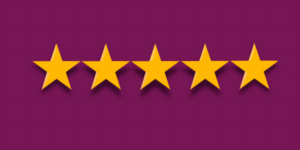
I’m Alicia Butler Pierre and I produced and narrated this episode. Audio editing by Olanrewaju Adeyemo. Music production and original score by Sabor! Music Enterprises. Video editing by Gladiola Films. Show notes by Hashim Tale.
You’ve been listening to Scale Tales, a podcast by Equilibria, Inc.







